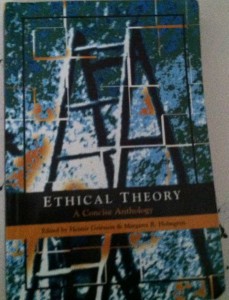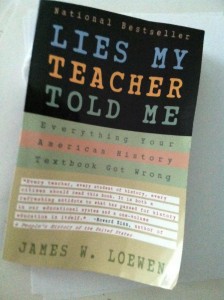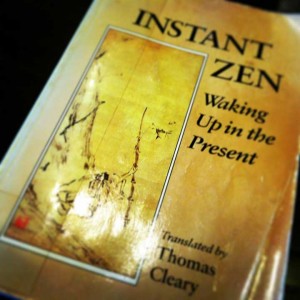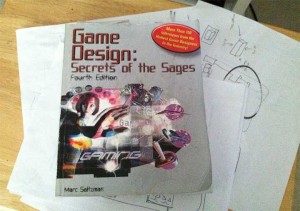Ethical Theory a Concise Anthology – [ISBN – 1-55111-292-2] – As you can probably guess, this book is about ethics.
The problem with ethics is that although it has an affinity with logic, it is in no way pure logic. And it is definitely not easy to solve problems using ethics.
What I mean by this is that most logic textbooks tend to use symbols and mathematical constructs in order to prove logical theorems. It is very similar to geometry in the sense that logic uses “proofs” in order to explain the truth or fallacious qualities of a item.
Ethics is different. It in many ways requires layers upon layers of understanding of both sides of a contentious issue. This is troublesome for people like me because I like having problems that are challenging but then certain “keys” or logical pathways can yield quick solutions once they are attained. Unfortunately, ethics does not have these clear cut keys or pathways to their solutions. Ethical problems are at their very core, people problems. And as emotional beings, we tend to carry extra information associated with every issue.
Ethical Theory a Concise Anthology is extremely interesting, instead of being a textbook where one author gives rote explanations and information…it challenges the reader with both modern and ancient viewpoints, opposing counter-articles and intriguing commentary on politically sensitive issues. The bo0k discusses and presents stark viewpoints on issues such as abortion, feminism and the perception of it in modern cultures, capital punishment and many others.
Not only are issues discussed but also Ethical primary concepts are fleshed out in great detail. These concepts include the more common ones such as the “Good of the Many vs the Good of the One” , utilitarian ideas, the essence of justice, “Do the ends justify the means?” and many other concepts. But what is great is the level of respect and thoroughness by which this anthology delves into each subject. It does not leave the reader with a quick glance and then move on. It truly pelts the reader with so much ideas and such an extreme and almost fractal approach to the intertwining bramble branches of these subjects…that it can easily be re-read for further gleanings.
As an avid reader, this book was tough. I don’t really like over-discussing issues. Unfortunately, over-discussing and extreme explanation of viewpoints is one of the only ways for there to be consensus, relaxation or peace in terms of Ethical disputes. What’s worse, it seems that ethical issues tend to become more complex as new factors arise in a system. So its messy business. What I like about this book is that it gave me a stronger ethical framework in order to understand my own perspectives. So much of what we do as people is controlled by preset dispositions that is hard to analyze without a second mind or outside opinion. It’s as if we need people to challenge and to disagree with us in order to come to more realistic approaches towards problems in a people-filled society.
The more books I’ve ready lately, the closer I’ve come to an important conclusion:
Information in this world is separable into several categories. It is relative, so information must be categorized as to how it relates to the observer of that information. In short, there is the reader (you) and there is the information that the reader is absorbing (the book, the newspaper, the website etc). With that being said, here is the conclusion.
1. There is information that is directly related to the reader. (Your bank account information, Social Security Number, your favorite colors, likes and dislikes, your thoughts, your dreams, your emotions, the names of your friends etc)
2. There is information that is indirectly related to the reader. (The names of shopping malls that may or may not be within your driving radii, poems and books that could be of interest to you, the technical manual to a device that you may have currently or might purchase in the future based on your “directly related” information.
3. There is information that is neither directly nor indirectly related to the reader. This could be junk to a reader. (Movies that a person does not enjoy, useless books, poorly written articles, poems and books that seem to have nothing to do with the reader)
The conclusion found is that the third category of information…the “junk” data, has tremendous value. This is the information that disgusts the mind. This is the information that helps us to define our opposites, and it opens our pathways to new tastes and intellectual delights.
Of course, Direct and Indirect information is much more important for one’s development and survival than junk. That is an axiom, a self evident truth which is observable. But the junk helps us to identify patterns. If there is a pattern to things that one, “Does not like” then the reader can ask the question, “Why don’t I like this?” By doing this over and over again, it becomes easier to detect at a distance and within a split-second toxic information…and also potential misinformation and/or lies. Now are you beginning to see the benefits of this?
Imagine if detection of lies was an actual skill. Some people in law enforcement and other fields actually get paid on how well they can detect lies!
But this goes far deeper than simple detection of conversational or written falsehoods. What if by absorbing enough information, and then processing that information, a person could detect deep fissures in logic and rifts in reasoning?
This is the very reason why I decided to push myself to read Ethical Theory a Concise Anthology cover to cover. It wasn’t that I was actually interested in this subject matter. As an avid reader, I knew that this information would help chisel away at my own contradictions and potentially pave inroads to greater opportunities.
I argue that there should be a primer for the information we ingest.
For a rough rule of thumb, I’d say we should consume about:
A: 20% information every day that is related to the reader (Direct Information)
B: 50% information that is indirectly related to the reader (Indirect Information)
C: 30% information that is neither indirectly or indirectly related the reader (Junk Information)
The thinking for this is that the Junk will help sharpen the mind of the reader. The patterns in the refuse, will help the observer to learn to refuse what is unnecessary in the moment.
If 30% Junk is unpalatable…simply pull it back to 10 or 5 percent. It doesn’t matter…it’s your life. But the more we push ourselves to digest more, the more alive and complete we will become.
Like my mom always said, “Try something new every day!” and that especially pertained to food, but I’m widening the scope slightly.
-Tyler



